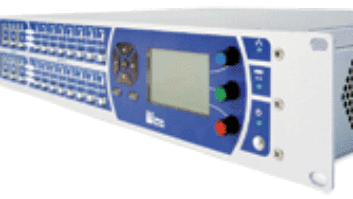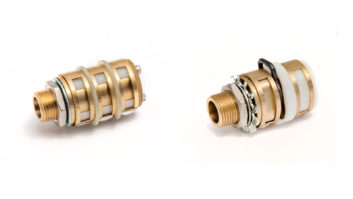
I carry my Technomad ProRack to every one-off. It contains three key
pieces of audio gear that I don’t feel comfortable without: The Midas
XL-42 (reviewed in Mix, March ’02) is a piece of the rock
— a chip off of the old block — that gives me the same
great mic pre and EQ found on an XL4 console; the new TC Electronic
Reverb 4000 (reviewed in this issue, see page 104), which replaces my
trusty old M5000; and the BSS FDS-366 OmniDrive Compact Plus. The
FDS-366 offers a wealth of functions beyond its ability to drive a true
stereo, three-way system — or three bi-amped outputs for monitors
— or MIDI link to slave multiple units for creating stereo
four/five/six-way systems. Other useful features include a mono sum of
all three outputs for feeding a subwoofer; zoning to six discrete areas
using fullrange or band-restricted outputs; a built-in mic input to
measure driver delay requirements; and even a stereo AES/EBU digital
output for studio monitoring applications. Although the FDS-366 was
basically designed as a loudspeaker-management system, I’ve found it to
be a surprisingly handy multipurpose tool, ideal for a variety of audio
applications beyond its main purpose.
BUILT-IN EFFECTS RACK
The FDS-366 OmniDrive Compact Plus is a 3-in, 6-out processor that
gives me three channels of processing with up to 60 filters of
parametric EQ and, if needed, delay. Listening tests have convinced me
that it is the sweetest-sounding digital parametric. Its 24-bit, 96kHz
converters provide an open sound and dynamic range that rival the best
analog equalizers.
My favorite singer insists on using an AKG C535, which, as many of
you know, is not very flat for a condenser mic. I’ve spent much time
analyzing its frequency response and found that it benefits from having
a dozen very specific filters inserted, all very minor cuts of just a
few dB but at just the right frequencies to smooth it out. I used to
simply insert a VariCurve, but the Compact Plus offers more options in
a single rackspace. Because these filters are for the mic, they’re
placed on that input.
TUNING SIDEFILLS
On the output, I use another set of filters to tune the sidefills. I
use Meyer CQ-2 or MSL-4 self-powered speakers. Their quality is
consistent enough from one to the next that when I put the sidefills in
the right place and use the correct preset from before, I pretty much
just have to turn them on and confirm their response. In this way, I
have a high-quality insert that’s always tweaked from my previous gig.
If I don’t get a soundcheck, it’s no big deal. Though I’d never use
compression in the monitors for a singer, adding a little dynamic EQ
notch nips the nastiness in the horns for the loudest notes.
I route a second output directly to the dedicated vocal reverb in my
rack without having to go to the console, using EQ on that output to
tweak the reverb. A third output routed from the vocal is returned to
the console for use in the band’s mixes. Again, I can use a different
EQ to give the band the sound they’d like, which may be different from
how the vocalist likes to hear it. A very wide dynamic EQ plus a little
light limiting keeps me from killing them with the big notes.
COOKING UP A SWEET SPOT
Sometimes, I need to even out the slight anomalies where the
sidefills meet onstage: I sometimes use a fourth output of the vocal to
send directly to a small speaker, usually an EAW JF80, which is
perfectly fine because it’s only used for vocals. The speaker fills in
the place where the two sidefills meet downstage-center, where there’s
always a bit of audio confusion. By delaying the small speaker to
synchronize with the sidefills, it reinforces the direct sound to
create a sweet spot. Again, the filters placed on this output are used
to tweak the sound of this speaker.
A COUPLE SPARE EQs…
With two more ins and two more outs, I still have two entire
channels of processing left. This year, I’ve been inserting them as mix
EQ for two musicians in the band: David Piltch and Greg Leisz. Both of
these world-class musicians rely heavily on their mix, so precise
tuning is critical. Piltch plays string bass without the benefit of an
amp, so it’s important that he has a reasonably flat wedge as a
starting point for the EQ gymnastics required to get the mic and pickup
on his upright to work together. Leisz plays acoustic, electric and
steel guitars and needs a flat, smooth response to hear the music he
delicately solos over.
REMOTE ACCESS & BACKUP
The Compact OmniDrive Plus’ output EQs can be adjusted from within
Smaart Live, which I use daily to confirm the response of the monitors.
Programs can be backed up on a PCMCIA card, but I also store its
settings on my laptop with SoundBench. I guess I could just ask the
local sound company for a Compact Plus, but they’re often being used
(as intended) as speaker processors.
Mark Frink is Mix’s sound reinforcement editor. He is
currently on the road mixing monitors for k.d. lang. He’s logged lots
of hours on the FDS-366.



